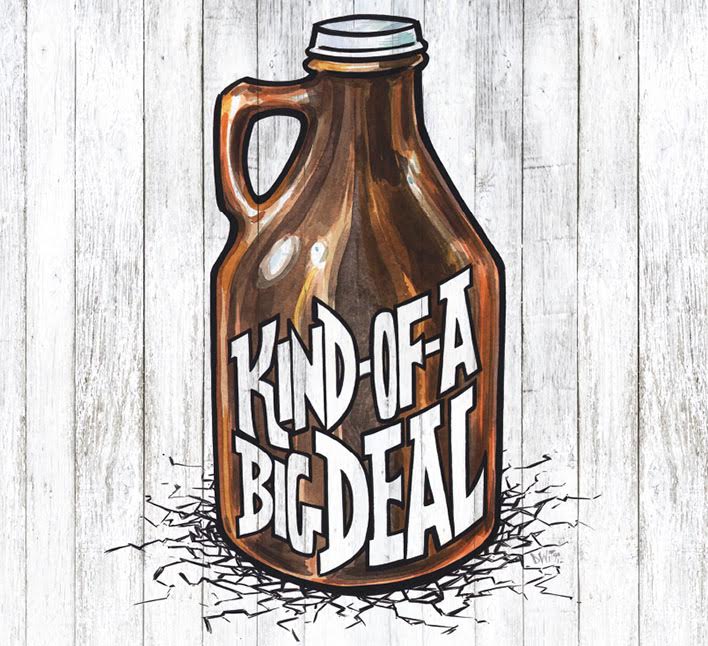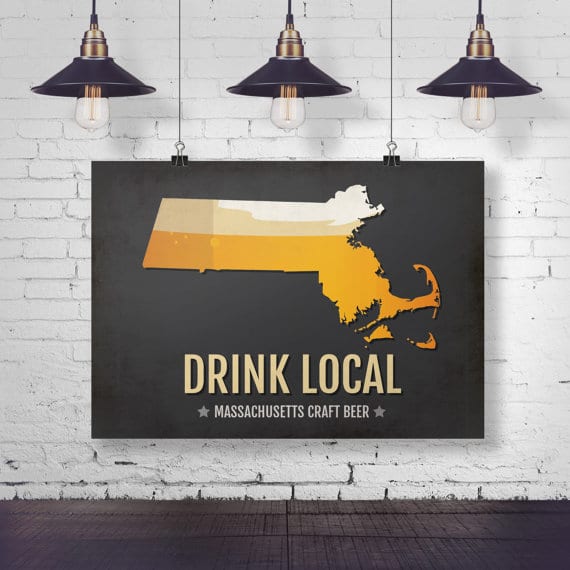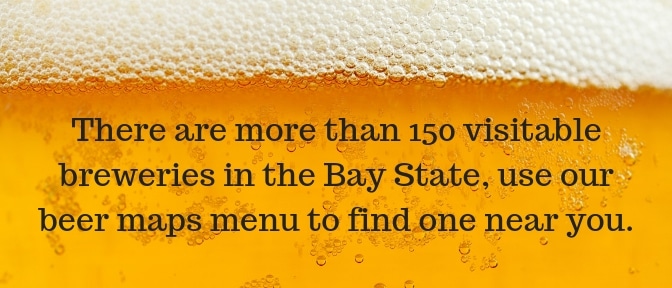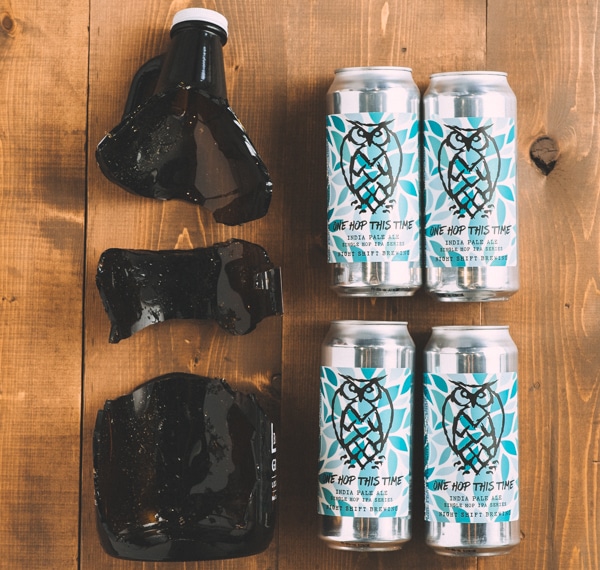In the second of a two-part series on how to be an eco-friendly craft beer drinker, I hail the benefits of drinking local
You’ve probably heard the “drink local” slogan a thousand times, but have you ever thought about the impact it could have on the environment if more of us committed to it? We’re not just talking about long-term concerns such as climate change or global warming here. On a local level, the fewer miles we drive, the less particulate matter and carbon monoxide that pollutes our air. That goes for beer delivery trucks too. It might not be a slogan yet, but we all “breathe local.” And with so many great breweries in Massachusetts these days, it’s easier than ever to find some tasty brews without having to drive too far, or at all.
If you’d rather listen than read, check out my recent appearance on the Branding Brews Podcast below, during which I shared much of the content from this 2-part blog post with host Ryan Weaton.
No offense to states like California, Colorado, or Pennsylvania that have great breweries, some of which distribute their beer here in Massachusetts, but we’ve got an amazing beer scene of our own. And it’s local. Why encourage all that use of fossil fuels for deliveries from far off breweries when you can choose from amazing options being brewed right here in Massachusetts (or insert name of your state here). Especially when the EPA reports that close to 30 percent of all greenhouse gas emissions in the U.S. come from transportation. As one article I recently read points out: as delivery chains extend farther, so does the pollution associated with them.
Related: How To Be An Eco-Friendly Craft Beer Drinker: Part 1 – The Plastic Problem
An added benefit to drinking local is that you’re also spending local, and that money sustains our local economy. To make it as easy as possible, our website homepage has a drop down menu of regional brewery maps so you can locate any of the state’s 150-plus taprooms and retail shops. Many of them are accessible by public transportation, and lord knows the MBTA could use additional revenues these days. Last summer, we even put out a blog post called Massachusetts Has A Flourishing Craft Beer Scene, And It’s All Just A Train Ride Away that highlighted three of the state’s most beer centric Commuter Rail trips. If you’re in Metro Boston, between the T’s Red and Orange Lines, you can visit more than 10 breweries and nearly as many seasonal beer gardens, all located just minutes from a nearby station.
Even better, especially given the substantial health benefits associated with exercise, would be a walking or biking tour of some of your favorite local breweries. Just last month we highlighted 5 Massachusetts Rail Trails That Lead to Breweries, so it should be a breeze to find a bike route or walking path that features sudsy pit stops in your neck of the woods. And just think, accumulating all those steps without leaving any carbon footprint makes it impossible to argue that you don’t deserve to be rewarded with a cold beer.
Things gets a bit trickier for the eco-friendly beer drinker when it comes to takeaway beer. From an environmental standpoint, nothing beats drinking right from the source, especially if you avoid single-use plastic or so-called compostable cups and imbibe from proper glassware. In the month of June, I managed to make a dozen brewery visits and hit up a handful of beer gardens* without creating any beer vessel waste. The only to-go beer I bought was brought home in refillable glass growlers.
Check out custom insulated cooler bags/backpacks, glassware and growlers at Groovy Groomsmen Gifts
Much has been written on the demise of the once-mighty growler, but dozens of breweries still fill them, including favorites like Brick & Feather, Black Hat Brew Works, Cambridge Brewing company, Cape Cod Beer, Honest Weight, Medusa, Navigation, and Trillium. Even Tree House plans to fill growlers again once it completes an expansion of its retail space and adds a second bar area. Unfortunately, despite a clarification of the law that eased restrictions on using growlers, many breweries have stopped filling them and others have introduced policies that often make it impractical.
From an industry perspective, especially if you’re one of the big boys, there’s no doubt that aluminum cans are a superior method for distribution and retail sales. Night Shift and others have also argued that growlers can compromise freshness, and that may be true. Viewed through an environmental lens, however, eliminating refillable growlers in favor of cans and bottles that frequently end up in landfills is kind of a big deal. Given the recycling rates of such single-use vessels, which according to the EPA are just 26.4 percent for glass bottles and 54.9 percent for aluminum cans, that leaves an eco-friendly craft beer drinker with no choice but to leave some taprooms empty-handed.

It might sound like heresy coming from a Brew Bro, but I actually drank less beer than usual during my eco-friendly month of June, and that was okay. Not surprisingly, I found I enjoyed it more – savoring the limited opportunities. At the risk of sounding preachy, I also felt healthier. With no cans or bottles to reach into the fridge for every night, I managed four straight weeks of no heavy drinking, defined by the CDC as 15 or more drinks per week for men, 8 or more for women. A recent comprehensive global analysis of alcohol consumption has even called those limits into question, leaving many to ponder how much alcohol can you drink safely?
Health arguments aside, the truth of the matter is that beer has a sizable carbon footprint, and not just in how it’s made, but in how it’s consumed. In a blog post that Tree House Brewing published on its website earlier this year, founder Nathan Lanier admitted that “the process of brewing in the absence of advanced sustainable technological systems has a significant impact on the environment; raw material use, transportation, utilities, and wastewater all contribute to a brewery’s carbon footprint.” His brewery has put its money where its mouth is, investing in a number of eco-friendly technologies. Others in Massachusetts and elsewhere have made laudable efforts as well.
Lanier goes on to say that “a careful, responsible approach . . . that considers our impact, and what we can do to offset it or mitigate it completely . . . is deeply important to us.” Admittedly, the impact of an individual consumer is nowhere near as profound, but together our actions count for something. And besides, if one of the world’s most popular breweries is committed to a greener future, then shouldn’t craft beer drinkers be too?
It’s not easy being green: 7 drink-local steps you can take as an eco-friendly craft beer drinker
If you’re willing to make an effort: (1) Embrace your inner locavore by choosing to purchase locally brewed beer whenever possible. (2) Better yet, frequent your local brewery taproom(s) more often and drink right from the source.
If you want to go the extra step: (3) Commit to driving less in the pursuit of beer, or be willing to carpool when you do. (4) Whenever possible use public transportation, hop on a bike, or be willing to hoof it on foot to a nearby brewery.
If you’re ready to go all in: (5) For takeaway beer, choose breweries that offer refillable growlers. (6) Promote the green beer cause by voicing your desire for sustainable brewing efforts, and sing the praises of breweries that do so. (7) Join me in committing to eco-friendly beer consumption for a month, week, or even just a day: drink only from the source (brewery), create no single-use beer vessel waste, and burn no additional fossil fuels while traveling to and from breweries. ![]()
* In order to avoid single-use beer cups at the three beer gardens I visited, I got approval to bring my own reusable cup ahead of time. Most beer gardens hesitate in allowing patrons to bring their own cups, and some refused, citing bureaucratic obstacles.






